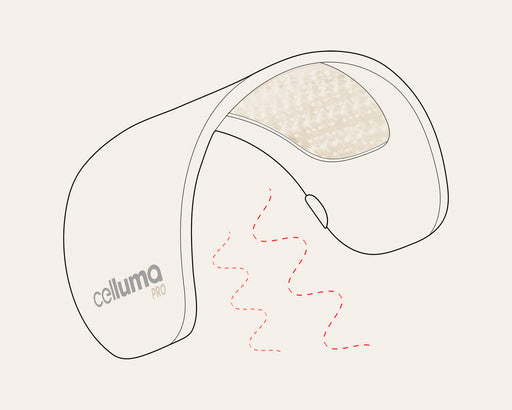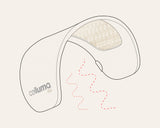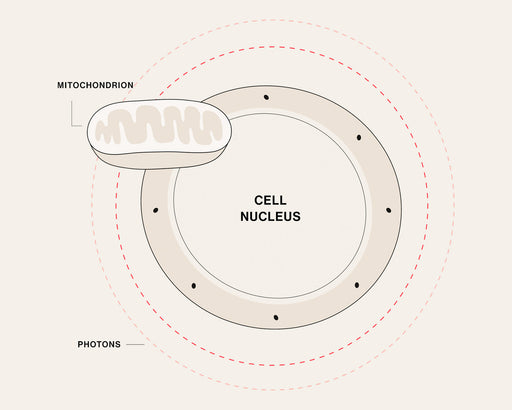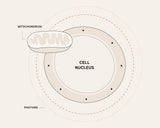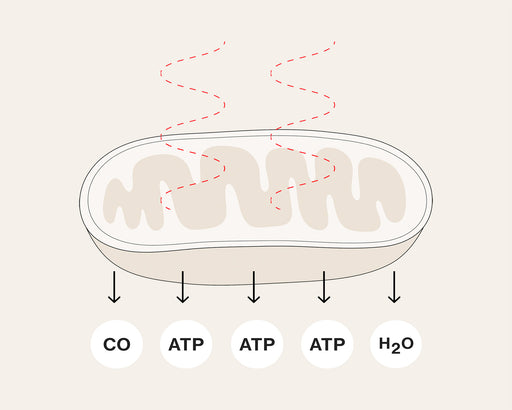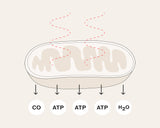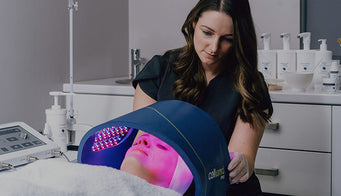Backed by Clinical Research
What the research says
Low-Level Light Therapy Research
Thousands of studies over decades demonstrate clinical proof of an ever-growing number of biological effects and therapeutic benefits from the application of Low-Level Light Therapy and red light therapy to the human body.
-
Low-Level Light Therapy
4 studies
Keys to Effective Low Level Light Therapy (LLLT). Stanford School of Medicine, 2016
The Nuts and Bolts of Low-level Laser (Light) Therapy. PubMed, 2012
Mechanisms and applications of the anti-inflammatory effects of photobiomodulation. PubMed, 2017
Biphasic Dose Response in Low Level Light Therapy. PubMed, 2009.
-
Aging Skin
4 studies
Low Level Light Therapy with Light-Emitting Diodes for the Aging Face. Clinics In Plastic Surgery, 2016
Low Level Laser (Light) Therapy (LLLT) for Cosmetic Medicine and Dermatology. Photobiology.info, 2014
Light-Emitting Diodes (LEDs) in Dermatology. PDF: Elsevier, 2008
Low-level laser (light) therapy (LLLT) in skin: stimulating, healing, restoring. PubMed, 2014
-
Body Contouring
4 studies
Body Contouring Using Low Level Light Therapy, 2013. Full PDF | PubMed Abstract
Low-Level Laser Therapy for Fat Layer Reduction: A Comprehensive Review. Lasers Surg Med, 2014
Review of the Mechanisms and Effects of Noninvasive Body Contouring Devices on Cellulite and Subcutaneous Fat. PubMed, 2016
Efficacy of low-level laser therapy for body contouring and spot fat reduction. PubMed, 2011
-
Hair Growth
4 studies
Role of Low-Level Light Therapy (LLLT) in Androgenetic Alopecia. PubMed, 2021
Photobiomodulation for the management of alopecia: mechanisms of action, patient selection and perspectives. PubMed, 2019
Low-Level Laser (Light) Therapy (LLLT) for Treatment of Hair Loss. PubMed, 2014
The growth of human scalp hair in females using visible red light laser and LED sources. NIH, 2014
-
Pain Management
4 studies
Low-intensity LASER and LED (photobiomodulation therapy) for pain control of the most common musculoskeletal conditions. PubMed, 2022
Mechanisms and applications of the anti-inflammatory effects of photobiomodulation. PubMed, 2017
The Use of Low Level Laser Therapy (LLLT) For Musculoskeletal Pain. PDF: MedCrave, 2015
Short-term therapeutic effects of 890 nm light therapy for chronic low back pain, 2014. Full PDF | PubMed Abstract
-
Acne
4 studies
Effect of Blue Light on Acne Vulgaris: A Systematic Review. Sensors (Basel), 2021
Blue and red light combination LED phototherapy for acne vulgaris in patients with skin phototype IV. Lasers Surg. Med., 2007
Utilization of light-emitting diodes for skin therapy: Systematic review and meta-analysis. Photoimmunology & Photomedicine, 2023
Visible Light in the Treatment of Acne Vulgaris. Journal of Cutaneous Medicine and Surgery, 2024
Learn about the Celluma Difference
WE'RE HERE TO HELP
Frequently Asked Questions
-
Celluma Light Therapy has the most medical credentials and clearances of any LED device on the market anywhere in the world. It is FDA-cleared and medically CE marked as well as ISO certified.
The most significant differentiator of Celluma devices are our patented, flexible, shape-taking design, allowing the device to be contoured closely to the treatment area to deliver an effective, uniform, and optimal dose of light energy to a curved human body. It also eliminates the need to hold the device in place or the need for use of a stand or cradle.
Another unique aspect is most of our devices are lightweight and battery-powered, meaning they do not need to be plugged into a power outlet to be used, making them highly versatile and mobile.
We offer over a wide range of device models that are multi-wavelength, and have multiple FDA cleared treatment modes in a single device. No other company offers a the number of treatment options in one Celluma LED device.
Our passion for innovation focuses on whole body wellness, offering different size options from mini handheld devices to large single LED panels, multi-panels, and full-body devices.
Read more about the Celluma Difference -
Low-level-light therapy or photobiomodulation is based on Light Emitting Diode (LED) technology and is the application of light energy to the body for therapeutic benefits. It promotes a natural photobiochemical reaction similar to the process of plant photosynthesis. The energy delivered by the LEDs has been shown to enhance cellular metabolism, accelerate the repair and replenishment of damaged skin cells, as well as stimulate the production of collagen — the foundation of healthy, smooth skin.
Research has shown that LED light therapy may help smooth skin texture, improve skin firmness and resilience, increase lymphatic system activity, restore skin’s natural cellular activity, and reduce the appearance of fine lines, wrinkles, and superficial hyperpigmentation. The treatment is for all skin types, and is non-ablative, non-invasive, painless, and requires absolutely no downtime. Patients or clients can return to their normal activity immediately after the treatment.
-
LED Light Therapy is a highly safe and non-invasive treatment, making it suitable for all skin types and ages. Unlike other light-based treatments, it doesn't use UV rays, so there's no risk of burning or skin damage. The light emitted by the LEDs penetrates the skin gently, promoting healing and rejuvenation without any discomfort or downtime.
This therapy has been extensively studied and used in clinical settings for decades, with a strong track record of safety. Celluma follows the science of safety and efficacy very closely and that is why it has been FDA-cleared for various applications, including skin care, hair restoration, and pain management. The vast majority people experience no side effects, and the treatment is so gentle that it can be used regularly to maintain skin and hair health.
However, there are some important contraindications to consider:
- All photo-sensitive drugs are a contraindication for low-level light therapy.
- Allow 3-5 days before administering light therapy and consult your doctor if you have recently been taking photo-sensitive prescriptions.
- Do not use if you are on steroidal medication – injections only.
- Do not use it over a pregnant belly (but you can use it over the face).
- Do not use if you have a history of epilepsy or seizures.
- Do not use over any cancer or any known metastasis before getting clearance from your doctor(s).
In all of the above, or with children under 12, always consult your primary care physician before using Celluma or any light therapy product.
-
It is the measure of the distance between two successive crests of a wave of light energy. Wavelengths of light energy are expressed in nanometers, and are part of the electromagnetic spectrum, which measures the range of all types of electromagetic radiation.
From radio waves to visible light to infrared light to x-rays, they all are types of electromagetic radiation - expressed in terms of energy, wavelength, or frequency. -
A nanometer is one billionth of a meter and one millionth of a millimeter. It is the most common measurement for visible and infrared light waves of energy.
-
Celluma emits blue 465 nanometer (nm) for acne, red 640 nm for skin conditions and wound healing, and infrared 880 nm for pain and inflammation. Any blue, red, or near-infrared wavelength within an acceptable wavelength range will be capable of achieving similar results.
-
There is no credible research to support the therapeutic value of wavelengths other than blue, red and near infrared. Blue, red and near-infrared wavelengths are supported by thousands of peer-reviewed clinical research studies to have significant therapeutic value when utilized correctly.


